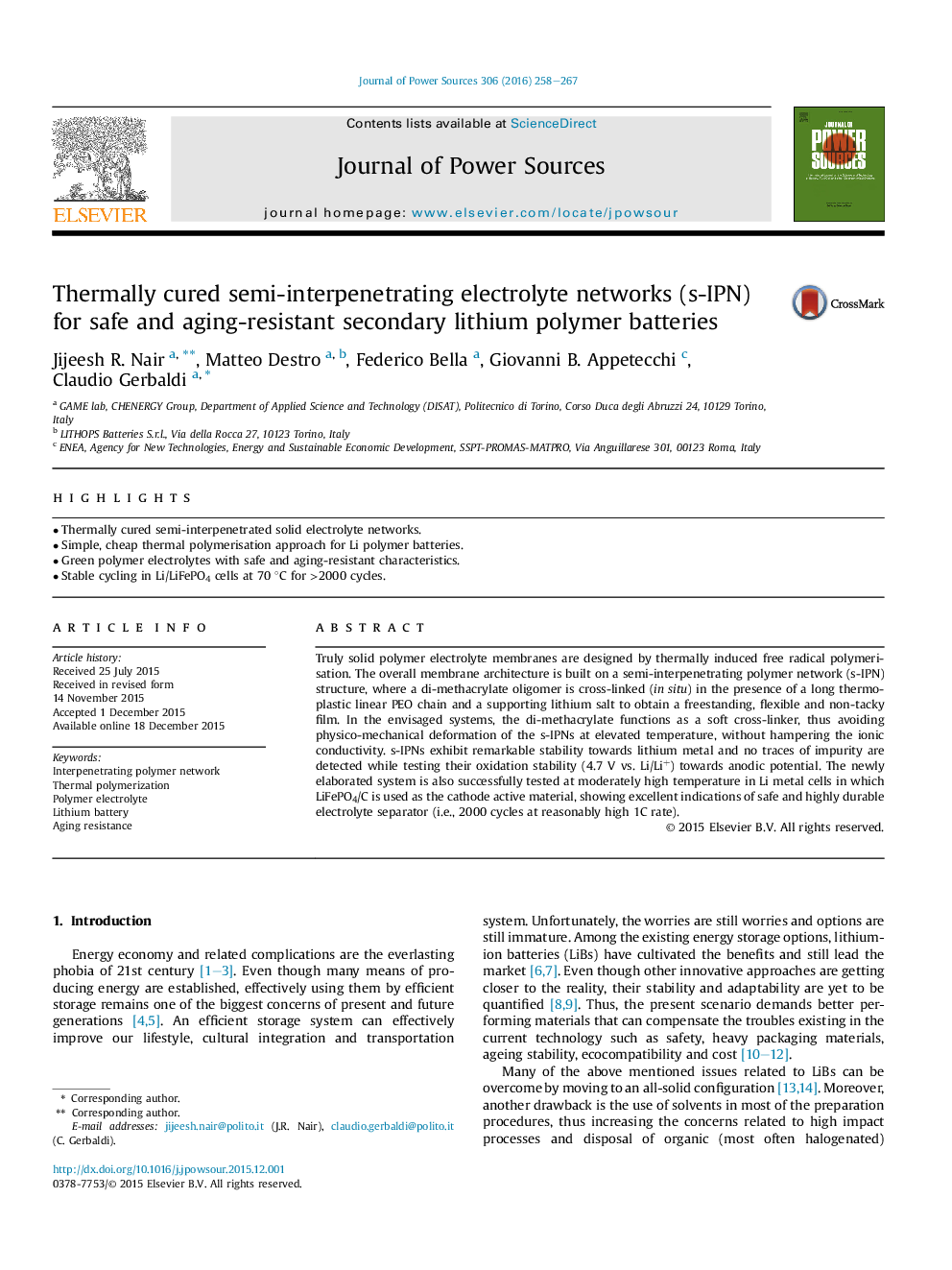| کد مقاله | کد نشریه | سال انتشار | مقاله انگلیسی | نسخه تمام متن |
|---|---|---|---|---|
| 1292370 | 1497926 | 2016 | 10 صفحه PDF | دانلود رایگان |

• Thermally cured semi-interpenetrated solid electrolyte networks.
• Simple, cheap thermal polymerisation approach for Li polymer batteries.
• Green polymer electrolytes with safe and aging-resistant characteristics.
• Stable cycling in Li/LiFePO4 cells at 70 °C for >2000 cycles.
Truly solid polymer electrolyte membranes are designed by thermally induced free radical polymerisation. The overall membrane architecture is built on a semi-interpenetrating polymer network (s-IPN) structure, where a di-methacrylate oligomer is cross-linked (in situ) in the presence of a long thermoplastic linear PEO chain and a supporting lithium salt to obtain a freestanding, flexible and non-tacky film. In the envisaged systems, the di-methacrylate functions as a soft cross-linker, thus avoiding physico-mechanical deformation of the s-IPNs at elevated temperature, without hampering the ionic conductivity. s-IPNs exhibit remarkable stability towards lithium metal and no traces of impurity are detected while testing their oxidation stability (4.7 V vs. Li/Li+) towards anodic potential. The newly elaborated system is also successfully tested at moderately high temperature in Li metal cells in which LiFePO4/C is used as the cathode active material, showing excellent indications of safe and highly durable electrolyte separator (i.e., 2000 cycles at reasonably high 1C rate).
Journal: Journal of Power Sources - Volume 306, 29 February 2016, Pages 258–267